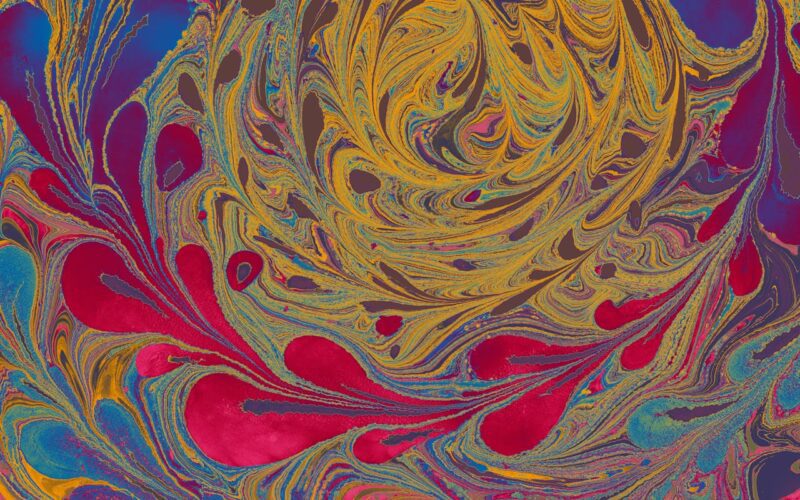How Therapy Could Soon Be Transformed
Psychedelic therapy has entered a new era of possibility, shaking up mental health treatment and therapy as we know it. After decades of stigma and secrecy, scientific research into substances like psilocybin and MDMA is making a powerful comeback. But what could this mean for the future of therapy, therapists, and those seeking mental health support?
In a recent conversation on the It’s Complicated podcast, therapist Mikko Karhulahti shed some fascinating insights on how psychedelic treatments might reshape the landscape of psychotherapy.
A Brief History: How Psychedelic Therapy Almost Got Lost
Back in the 1950s, psychedelics emerged as a groundbreaking area of psychiatric research. Scientists were initially excited by the possibilities, exploring how these substances could dramatically shift human consciousness and improve mental health. However, that enthusiasm spilled out of labs and into mainstream culture, fueling the rebellious counterculture of the 1960s. Influential but controversial figures like Timothy Leary became symbols of psychedelic freedom, inadvertently complicating research and generating widespread fear among political leaders.
By the late 1960s, most psychedelic research was abruptly stopped. Governments cracked down, declaring substances like LSD and psilocybin Schedule 1 drugs, officially having “no medical value.” Richard Nixon even famously labeled Timothy Leary “the most dangerous man in America.” For decades, psychedelic science nearly vanished into obscurity.
Yet, quietly and determinedly, researchers have begun resurrecting these studies. Starting in the 1990s, a new generation of scientists reintroduced psychedelics into rigorous, controlled experiments. Today, institutions like Johns Hopkins, UCLA, Imperial College London, and UC Berkeley consistently publish groundbreaking research exploring the therapeutic potential of substances once seen only as dangerous.
Why the New Wave of Psychedelic Research Matters
What makes today’s psychedelic renaissance different is the strict scientific rigor. Gone are the freewheeling experiments of the past. Instead, teams of researchers carefully control and evaluate psychedelic sessions. This cautious approach aims to ensure safety, effectiveness, and, most importantly, legitimacy.
The results are impressive. For example, ketamine is already FDA-approved for severe depression, and MDMA is in Phase 3 clinical trials for PTSD. Psilocybin, meanwhile, is showing enormous promise in treating conditions like treatment-resistant depression, addiction, and anxiety.
Organizations like the Multidisciplinary Association for Psychedelic Studies (MAPS) envision a near-future where fully regulated clinics offer psychedelic-assisted therapies alongside traditional psychotherapy. This vision may sound futuristic, but it’s closer than many realize.
Could Psychedelic Therapy Transform Mental Health Treatment?
One of the most exciting aspects discussed by Karhulahti is how psychedelic treatments fundamentally differ from traditional psychiatric methods. Instead of daily doses of medications like SSRIs, psychedelic therapy often involves just a few carefully managed sessions combined with extensive psychotherapy.
Traditional psychiatry usually treats symptoms. Psychedelics, on the other hand, might allow therapists and clients to directly confront root causes of suffering—such as trauma or chronic depression—in profound, transformative ways.
Imagine a scenario: clients prepare for weeks, then experience one or two powerful psychedelic sessions with trained therapists guiding them. Afterward, ongoing sessions integrate these experiences into daily life. It’s therapy, but accelerated, deeper, and potentially more lasting.
Karhulahti points out how this model can genuinely change the way therapists approach psychological pain. Instead of merely managing symptoms, the goal becomes genuine healing—going to the heart of personal suffering and trauma.
The Challenges Ahead: Stigma, Skepticism, and Spirituality
Naturally, psychedelics still carry significant cultural baggage. Older generations especially may remain skeptical due to memories of the turbulent ’60s. Misperceptions persist that these substances are inherently dangerous or exclusively recreational.
But attitudes are shifting, especially among younger people who’ve grown up with broader access to information and openness to new approaches. Rigorous, ongoing research helps ease these fears by clearly demonstrating potential benefits alongside clear safety protocols.
Interestingly, a major area of exploration is the mystical or spiritual dimension of psychedelic experiences. Researchers frequently document profound spiritual encounters that occur during psychedelic sessions, something traditionally viewed skeptically in scientific circles. Yet, it’s precisely these experiences that many patients find deeply healing.
Karhulahti speculates that we might even see a new kind of secular spirituality emerge from psychedelic therapies—a spirituality accessible to people regardless of religious background or belief.
Making Psychedelic Therapy Accessible: Costs and Insurance
A major question mark hovering over psychedelic therapy’s future is cost. Treatments currently can be extremely expensive. MAPS estimates that treating one PTSD patient with MDMA could cost upwards of $50,000. One proposed solution could involve group therapy settings, making psychedelic treatments more affordable, while also offering powerful group-based therapeutic experiences.
Insurance companies have begun showing cautious interest. If research consistently proves that psychedelics offer effective, lasting relief, insurers may eventually embrace covering these therapies.
Microdosing, Psycholytic Therapy, and Other Possibilities
Alongside traditional psychedelic therapy, two other approaches mentioned by Karhulahti are microdosing and psycholytic therapy. Microdosing – taking tiny, non-perceptible amounts of psychedelics has gained popularity for enhancing mood and productivity, though its scientific efficacy remains uncertain.
Psycholytic therapy involves lower psychedelic doses, not inducing the full-blown mystical experiences associated with higher-dose sessions. This form of therapy could be ideally suited for group therapy contexts, allowing participants to remain engaged yet deeply reflective.
Is Psychedelic Therapy the Future of Mental Health?
Looking ahead, psychedelic therapy holds enormous promise. But significant challenges remain. Researchers must navigate legal and regulatory hurdles, continue proving efficacy and safety, and address affordability to ensure treatments are accessible.
Despite these challenges, psychedelic therapy feels poised to disrupt the mental health field profoundly. By shifting therapy from symptom management to deep, transformative healing, psychedelics offer therapists powerful new tools. For therapists like Mikko Karhulahti, this future isn’t just exciting, it could revolutionize how we understand mental health altogether.
The psychedelic renaissance is here, full of possibilities and careful optimism. Perhaps, after decades of stigma and uncertainty, the future of mental health really is just around the corner.
Listen now on:
